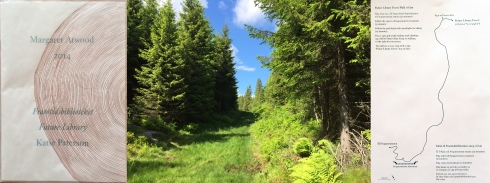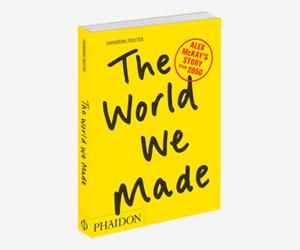
The Utøya memorial is being discussed again in Norwegian media these days, as last week several art critics voiced their doubts about having Jonas Dahlberg’s winning proposal from 2014 built (or excavated in this instance). The local community who will live next to this memorial are against it and are threatening to go to court to stop it. It appears they were never consulted in the process in the first place, so much for public consultation. Yet the Norwegian Government is set on the go ahead for the project for 2017, apparently the majority want it. And democracy wins.
Meanwhile these discussions are taking place, which offer interesting opportunities to debate values around human commemoration and how this can be physically manifested, no one seems to talk about the environmental impact such an intervention will have. I wrote in my blog-post: In memory of 22 July at Utøya that the creation of this void will have repercussions on the ecology of this natural site. In fact if this goes ahead, it is ‘ecocide’. Just when the debate on the radio was taking place last week, I was serendipitously reading in E. O. Wilson’s The future of Life (2002), and on page 58 he writes:
“To reduce the area of a habitat is to lower the number of species that can live sustainably within it. More precisely, as the area shrinks, the sustainable number of species falls by the sixth to the third root of the area. At the forth root, the reduction of the habitat to one tenth of its original area eventually causes the fauna and flora to decline by about one-half.”
What this means is that much of the life that takes place on the end of the headland will suffer from the slicing that is projected.
Whilst this art piece still holds up as a powerful visual statement, I have doubts to its value as a memorial. Indeed it will be a monument to remind us of human endeavour, at the same time as it will become yet another human experiment where nature pays the price of the outcome, as the economists like to call it – an externality. Ironically the unintended consequences will result in habitat loss and loss of biodiversity. For a memorial that is about loss, and that will cause loss of life in other than human forms, the taste is bitter. Again I ask: “Is it fitting that nature should be wounded for the wounds we humans cause each other?”
My blog-post ended with: I cannot find peace or closure at staring at this void. But perhaps starring at the horizon beyond will make sense at some point? I have come to the point where I can say this is morally not right. As brilliant as the art work is conceptually, as Laurence Weiner says about art: “it provides a means to question your meaning and the consequences of your choices.” It is yet another demonstration of anthropocentric endeavour – mind over matter. I believe in taking the precautionary principle when it comes to intervening in nature. However deep our fear, our sense of loss, and need for remembrance – it does not sanction more suffering of life, not even non-human life.








